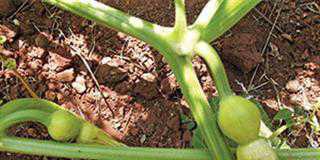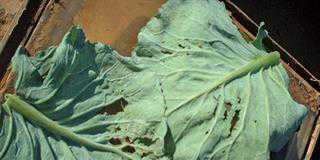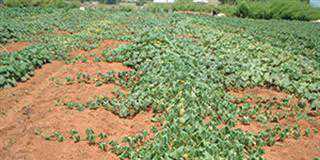
Photo: Bill Kerr
Much breeding work has been done on cauliflower in the past few decades. I was a salesman for a large seed company and introduced the first hybrid variety to vegetable farmers. It was an immediate success as it produced a uniform crop much earlier than the open-pollinated varieties used at that time.
Most of these old varieties were sensitive to day length and cold requirements. Some of these would have to be in the lands for many months and many would have huge curds weighing several kilograms.
READ What makes cauliflower different?
Large farmers would select the best plants in a land to collect seed for subsequent plantings and there were a number of such varieties that were named by how many months they would take from transplant to maturity.
When hybrids started to become available, all these varieties would start to disappear, which was a great pity as some had some very good qualities and could have been used by international breeding companies to cross with their inbred lines.
Many farmers came to regret allowing these varieties to die out.
Modern hybrid varieties
Modern hybrid varieties generally are far less seasonally bound, have longer safe planting periods, and are now usually defined as summer and winter varieties rather than only being suited to planting for one or two months per variety.
Their maturity is also much earlier; they are usually harvestable 75 to 90 days from transplant. Their head sizes are also much smaller than the varieties of old and usually weigh 400g to 600g, which the market prefers.
With uniform maturity, harvesting takes place over a much shorter period, saving on labour, and with the shorter growing period the land is ready for the following crop much sooner.
READ The bacteria that serve as fertilisers and growth promoters
Breeding development has produced hybrids with leaves that curl over the curd and prevent sunlight from browning the curds and making them less attractive. In the old days, farmers would even tie the leaves over the curds to prevent sunlight from browning the heads.
The snow-white curds contrasting with the lush green leaves at the base make them look very attractive in the punnets.
An interesting point is that because cauliflower is basically a cool-weather crop, tropical countries were not able to plant varieties that provided head protection, but managed to develop heat-tolerant varieties that have an open structure.
This allows sunlight to discolour the curds, and in these countries this is acceptable as it is all people are exposed to and know. These varieties are extremely early maturing.
Cauliflower is very sensitive to a boron deficiency, much more so than other cruciferous crops.
The problem is that you will only become aware of a deficiency when it is too late to do anything about it and stand to lose the crop. The deficiency manifests as brown areas on the curd, and when one cuts down from these areas towards the stem, you will find a hollow stem.
You should act proactively and apply two foliar applications of boron at about 1kg/ha.
A very important part of cauliflower growing is to prevent any form of stress as you approach harvesting stage.
Prevent heat stress in summer by frequent light irrigations to keep the crop cool during the heat of the day.












